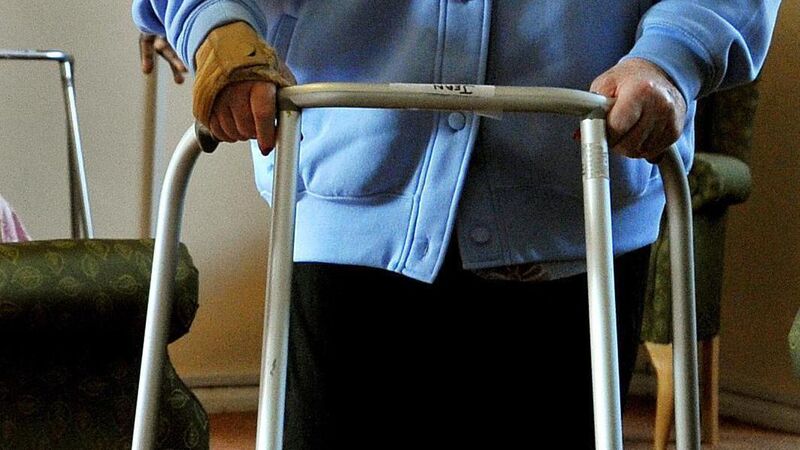Irish Examiner view: With no plan, catastrophe looms large for elderly

ESRI research has indicated that, with our increasingly ageing population, long-stay bed capacity requirements are projected to increase from 29,579 beds in 2022 to between 47,588 and 53,266 by 2040
That it also highlighted a potential future calamity in terms of our ability to effectively manage and care for our increasingly ageing population, should set alarm bells ringing.
Addressing the Dáil’s committee on budgetary oversight, Alan Barrett, the ESRI’s research professor, maintained that while inflation has been slowing here, prices remained at an elevated level, with food inflation staying particularly high.
Its research also showed that, between 2020 and 2025, changes to the permanent tax and welfare system resulted in small average income losses compared to policy changes pegged to wage growth. While temporary measures were successful in helping households deal with higher prices, their phasing out will cause affordability issues if headline welfare payments fail to keep pace with income growth.
Starkly, Prof Barrett said that those with disability face a significantly higher cost of living and are much more likely to face deprivation. Similarly, it has found that a fifth of our children are living below the poverty line, especially when housing costs are factored in.
Children living in one-parent families are particularly vulnerable and a second tier of targeted child benefit would result in a reduction in child poverty rates.
Going on to highlight the possible volatility in windfall corporate tax revenues and the chance of overheating due to stimulatory fiscal policy, he predicted the capacity constraints would hamper the delivery of the National Development Plan and national housing targets.
And, given that Ireland’s economic model is so reliant on an open international trading environment, ongoing threats to that environment are “concerning”.
The ESRI’s analysis is certainly food for thought for the Government as the budget approaches, but another issue it highlighted which underlines our future financial fragility and which should spark concern is the fact we will need between 15,000 and 20,000 additional nursing home beds in the next 15 years.
Its research has indicated that, with our increasingly ageing population, long-stay bed capacity requirements are projected to increase from 29,579 beds in 2022 to between 47,588 and 53,266 by 2040. This explosion in the level of care necessary for our citizens should be heavily prioritised and long-term fiscal planning will be necessary to ensure we don’t get trapped in another unnecessary catastrophe.
The breathing of new life into one of Cork’s most historic neighbourhoods is a welcome and overdue initiative.
With some €7m having been awarded by Cork City Council for the redevelopment of the Shandon Butter Market into a community and enterprise hub, this flagship project in the Shandon integrated urban strategy will create new jobs and cultural spaces, as well as many other possibilities.
The importance of the Shandon area in the context of Cork’s development as a city is undeniable and seeing it regenerated as a central hub for both the local and wider communities underline how it remains central to the city’s beating heart.
While the Butter Market has huge historical significance, its repurposing illustrates just how heritage buildings can be reimagined for innovation and enterprise purposes while remaining rooted in the local community.
That community has, through its determination and vision, now ensured that with a lot of determination and willpower, local communities can be completely revived.
Too often we have seen inner city communities devastated by neglect and dereliction, but the people of Shandon have demonstrated that determination and belief — with a little financial help from the city authorities — can go a long way towards restoring former glories.
For local people, the repurposing of the Shandon Butter Exchange cannot come quickly enough, and the fact that work will begin in less than a year and be completed by early 2008 will rekindle a spirit of both community and enterprise that was in danger of being lost.
It was entirely predictable that Jimmy Kimmel would be axed from his late-night talk show on the US network ABC.
The popular presenter has long been unapologetic about his criticism of both Donald Trump and his administration. His insistence on poking fun at the notoriously thin-skinned US president had him firmly in the crosshairs of Trump and the increasingly bullish thugs he has appointed to do the heavy lifting when it comes to dishing out retribution against perceived enemies — ie, anyone who doesn’t agree with him.
Like Stephen Colbert before him, Kimmel has now felt their wrath and extreme prejudice and has been sacked for daring to mock Trump and his cronies. The unadulterated pleasure taken by the self-styled king and his courtiers at the news that ABC’s parent company Disney had given Kimmel the chop was nearly as disturbing as the decision itself.
The administration’s continuing attacks on critical voices in the media, academia and business worlds is feted by them as the protection of free speech. In fact, it is anything but.
Correctly, the Foundation for Individual rights and Expression, a US-based free-speech advocacy group, has described Kimmel’s suspension as an example of another media outlet withering under government pressure and ensuring that the administration “will continue to extort and exact retribution” on broadcasters and publishers critical of it.
We might not all agree with what Kimmel said. The fact he is being censured for telling his version of the truth — a truth the president and his Maga enablers find uncomfortable — tells us everything we need to know. By shutting down free-thinking commentators, the administration is exercising a power it should not have. Once more, comparisons with other autocracies are unavoidable — and distinctly uncomfortable.
When will the book burnings start?
















